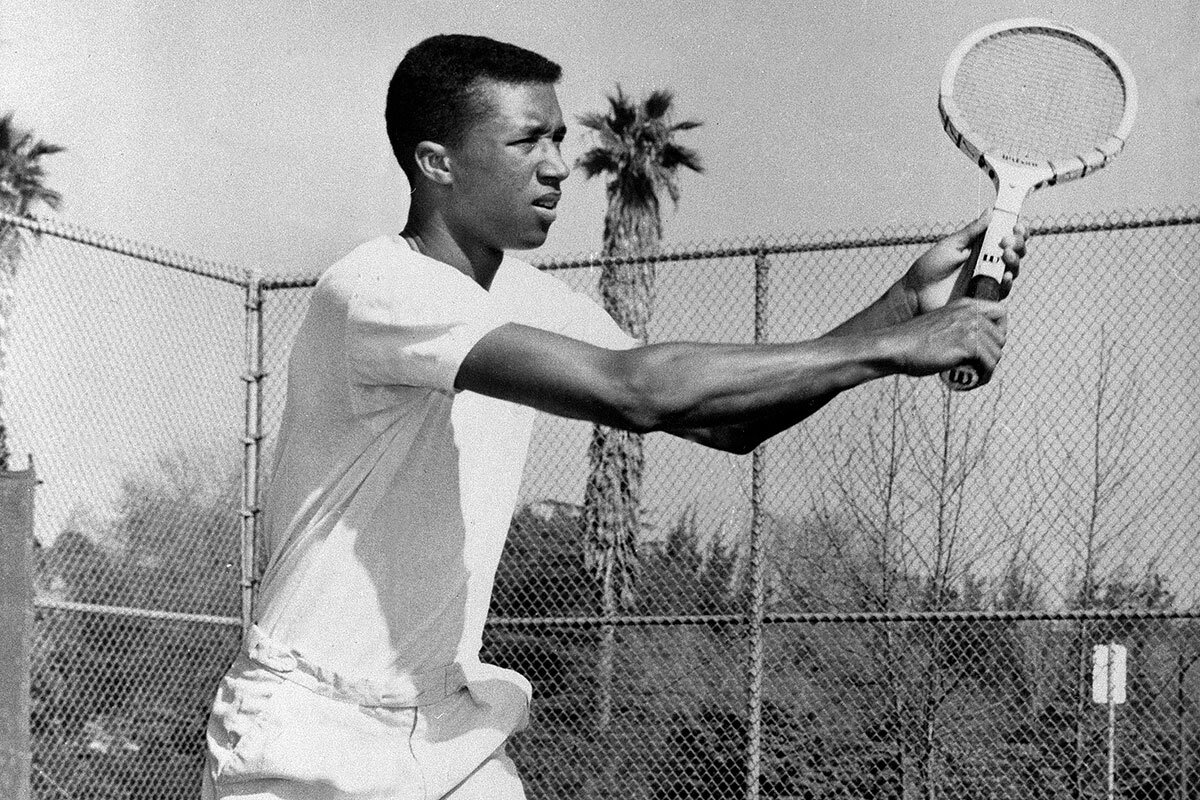Serena Williams’ legacy – on and off the court
Loading...
This week’s U.S. Open might be the last time we see Serena Williams play tennis. She says in her farewell announcement in Vogue that she doesn’t like the word retirement, but it’s clear that her “evolution,” as she calls it, will take her away from the game, at least competitively.
She is scheduled to play the first match of her final tournament this evening in Arthur Ashe Stadium, which is fitting, because the two of them are arguably the most important Black people the sport has ever seen. In fact, by virtue of what they mean on and off the court, they rank among the most important tennis players of any race.
I express reverence for them in different ways. I see Mr. Ashe as more of a mentor – the civil rights activist, the historian, the champion. Ms. Williams is more of a peer – the successful upperclassman who went on to do amazing things.
Why We Wrote This
A story focused onOur commentator notes the role perseverance played in Serena Williams’ success, with special appreciation for the high standard she set for herself and her sport.
I was a senior in high school in South Carolina when the crowd at the 2001 Indian Wells tournament mercilessly booed 19-year-old Serena, displaying its suspicion that Venus Williams’ last-minute, injury-related withdrawal from the sisters’ semifinal match was a setup. Serena went on to win the tournament – and to boycott Indian Wells for over a decade.
In advance of her next competition there 14 years later, she wrote in Time that she and her family had been “haunted” by the earlier experience. Looking back at that incident and recalling being the only Black child in many of my classes at the time, I’m reminded that feeling unwelcome can mold a young person’s sense of being. Now that I’m a father of two, thinking of a teenager bearing the brunt of adults’ anger fills me with rage and sorrow.
But Ms. Williams persevered in the way that Black people do in this country – giving our all while too often being treated as foreigners. She grew up in the shadow of her older sister Venus and her determined father, “King” Richard, only to surpass them both en route to 23 Grand Slam singles titles, among numerous other wins.
The mark of greatness, however, is when a person’s accomplishments transcend their field of expertise. Ms. Williams has been outspoken with regard to women’s rights, whether about gender inequality in pay or her own difficulties in childbirth.
According to the Centers for Disease Control and Prevention, Black women in the United States are “three times more likely to die of a pregnancy-related cause than White women.” Referring to that data, Ms. Williams says about Black women in a CNN opinion piece, “before they even bring a new life into this world, the cards are already stacked against them.”
In too many ways, the metaphor of a stacked deck represents the larger Black experience in America. Ms. Williams grew up in Compton, California, a place better known to many for its crime than for its celebrities. Yet even with its reputation of gang activity, Compton has nurtured the likes of the Williams sisters, Dr. Dre, and Kendrick Lamar.
I fondly remember, more than a decade after the ugly scene at Indian Wells, when Serena represented the U.S. at the 2012 Olympics in London. After she dominated Maria Sharapova to win the singles gold medal, she paid homage to her roots with a dance called the C-walk. (The C stands for Crip, the name of a gang.) Ms. Williams was criticized for the dance’s gang-related origins, but she knew better. And so did I. There’s no shame in claiming where you’re from.
It is irresponsible and ill-advised to distill people in a way that disregards their heritage. That’s one of the primary problems we have in this country now, and more often than not, when we engage in this behavior, it hurts Black people. Or, as a popular saying goes regarding white people’s selective interest in the Black experience: “They want our rhythm, but not our blues.”
As Ms. Williams acknowledges in her announcement in Vogue, her attitude and sense of self demand the best in all she attempts, even as a fashion icon. Where some might dismiss her as a diva, I contend that her pursuit of excellence raised the sport and demanded accountability. Even though her challenges to a judge at the 2018 U.S. Open cost her a game, they were justified, in my view, because she knew she hadn’t been given the respect she was due.
Ms. Williams will undoubtedly receive her flowers this week. She will be cascaded with kind words and baubles in a sport and culture that can still be unwelcoming at times. She will stand as both recipient and descendant of two civil rights champions – Mr. Ashe’s tireless demand for Black dignity and Billie Jean King’s pursuit for female equality and equity. She will do these things with the grace, power, and swagger that have defined her career.
I, for one, will enjoy Ms. Williams’ victory lap. I see her as both peer and peerless. She is among the best this country has to offer – bold, beautiful, Black. And while I will miss her on the court, I understand that her legacy goes far beyond grass and clay.







